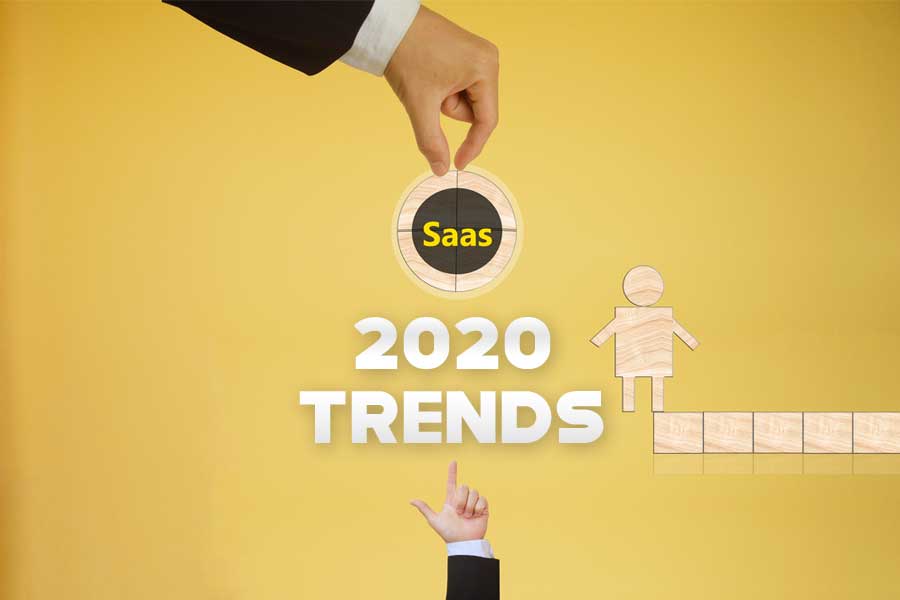Software as a Service (SaaS) is one of the fastest growing industries today with little sign of slowing down. Companies and business owners alike rely on these services to keep their staff and workflow running smoothly, so when they find something that works, they stick with it.
Offering a platform as a service is the first step into breaking into this new market, but there comes a point where businesses need to re-evaluate their plan and ask, “What’s next?”
In the list below we will walk you through the top 10 features customers look for in their SaaS provider— giving you insight into the next steps you can take to start growing your business.
1. Cloud Service and Integration
With cloud services becoming increasingly common, SaaS companies need to ensure that user data can be accessible on any device. This takes the hassle out of potentially inconsistent or unavailable data across devices.
Similarly, it is in the best interest for both you and your client to have softwares that all work well together. This means that if you want to offer separate apps for task management, chatting, email marketing, and invoicing, it’s your best bet to make sure they can all work together.
2. Going Mobile
This brings up the issue of mobile compatibility. Smartphones and tablets today have capabilities reaching that of their computer counterparts, thus making mobile work both common and expected.
As such, having mobile compatibility is a must when growing a SaaS company, especially if your service offers chat functions or task management.
3. Consolidated services
Business owners and staff alike are looking for a user-friendly experience.
The last outcome anyone wants is a complicated workflow process that loses time and money hopping between a handful of different software. If you can provide for all the needs of your market in a single ecosystem, it’s always best to do so.
Examples of services with full integration are companies such as Process Street and Templafy. These SMB SaaS companies allow for an individual to not only have documents and templates in a single location, but also automate certain business functions, offer employee training, and serve as task manager.
4. Specialization
In a world where catering toward vertical markets– specific niches– is increasingly common, many SaaS clients will want products with features that make their particular business easier to run.
As a provider of software solutions, you, too, benefit from catering to a vertical market. By learning the ins and outs of your audience, you can provide SaaS products that deliver unparalleled service to your clients. As your product becomes well known in your niche, it can lead to opportunities for developing complementary services for an established clientele.
If you become the best at what you do in a specific niche, people will know about it– ultimately boosting your growth rate.
5. The Micro Market
Not all software solutions need to be large scale. In fact, sometimes targeting a specific need is what can open the door to market growth as it limits your competition.
Micro SaaS is a perfect way to break into niche markets because you can offer services that piggyback on existing platforms, have the potential to grow a dedicated following, and keep startup costs to a minimum. If you already own a larger scale platform, you can add micro SaaS products to your line-up that boast stable and easy integrations.
6. Data Security
The more information is stored online, the more clients worry about cybersecurity. This is more than a valid concern given the devastating effects even a minor data breach can cause– irreparably damaging to their trust.
Making added provisions for security as part of your SaaS business can sometimes give you the edge over less security-conscious companies– especially if your software deals with large quantities of personal information.
7. Helpful Robots: Machine Learning and AI
There is a dedicated following for machine learning and artificial intelligence advancements. This is with good reason– they offer fast, efficient, and cost-effective help. In terms of growing your company, AI can be used to help automate customer outreach, personalize suggestions made to clients, run data gathering and analysis, and get you the information you need to form better market strategies.
8. When the Price is Right (and When it’s Not)
Setting the right price is an important part of any business model. If your price is too low, clients might think your services are inadequate or even a scam. Price your product too high and you might have created unmet expectations and poor client retention.
9. Building a Subscription Model
Everyone looks for how to get the most bang for their buck while also getting the best service there is to offer.
When SaaS was first being developed, monthly fees were the norm. While this is still is the case for some services, transactional pricing is becoming increasingly popular. If your market has a limited use or need for your particular SaaS tools and is inclined to only pay for what they use, this might be a worthwhile route to consider.
10. Retaining Clients
Retaining clients in the SaaS industry is important for two main reasons: it stabilizes your monthly revenue, and it is always easier to sell new products to an existing customer than a new one.
The SaaS Market: What Clients Want
The SaaS industry is in the business of giving clients software that is going to enhance their workflow, grow their business, manage their data, and so much more. Knowing your client base and understanding their needs is the defining factor to whether your SaaS solution will sink or swim.
At RevTek, we not only invest in growing SaaS companies, but we give our clients insight on how to make their business the most profitable it can be.



